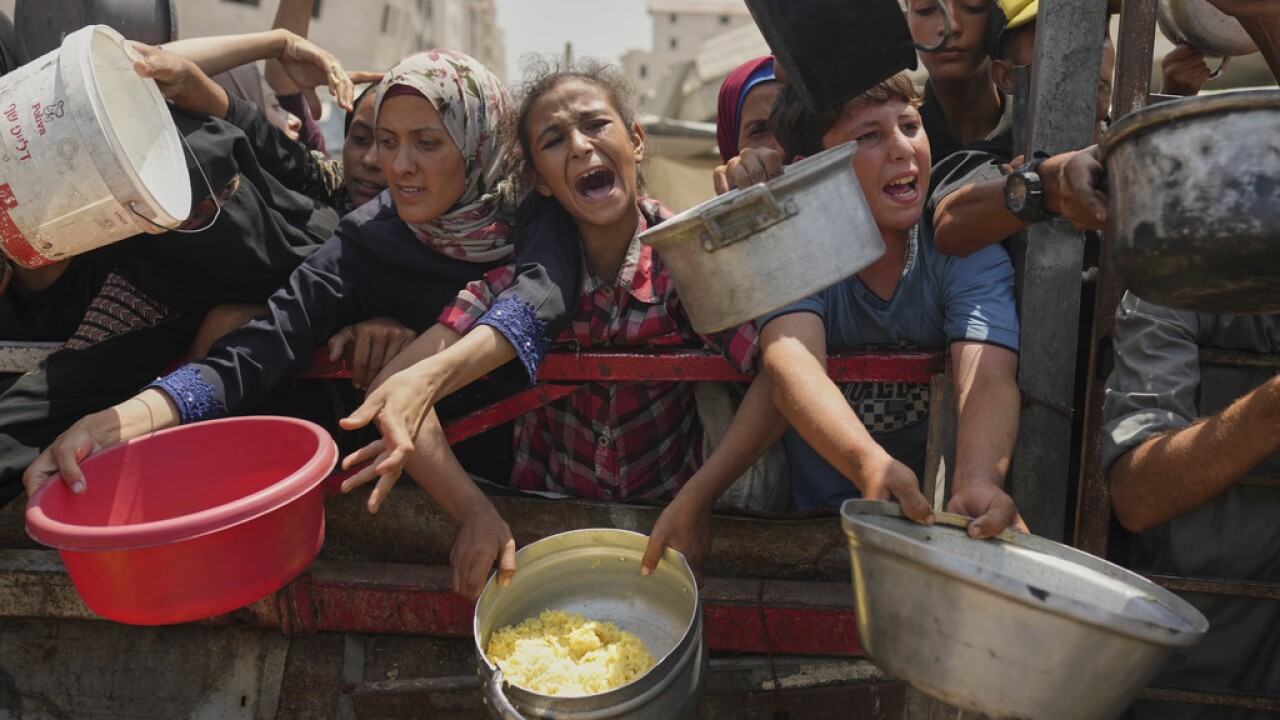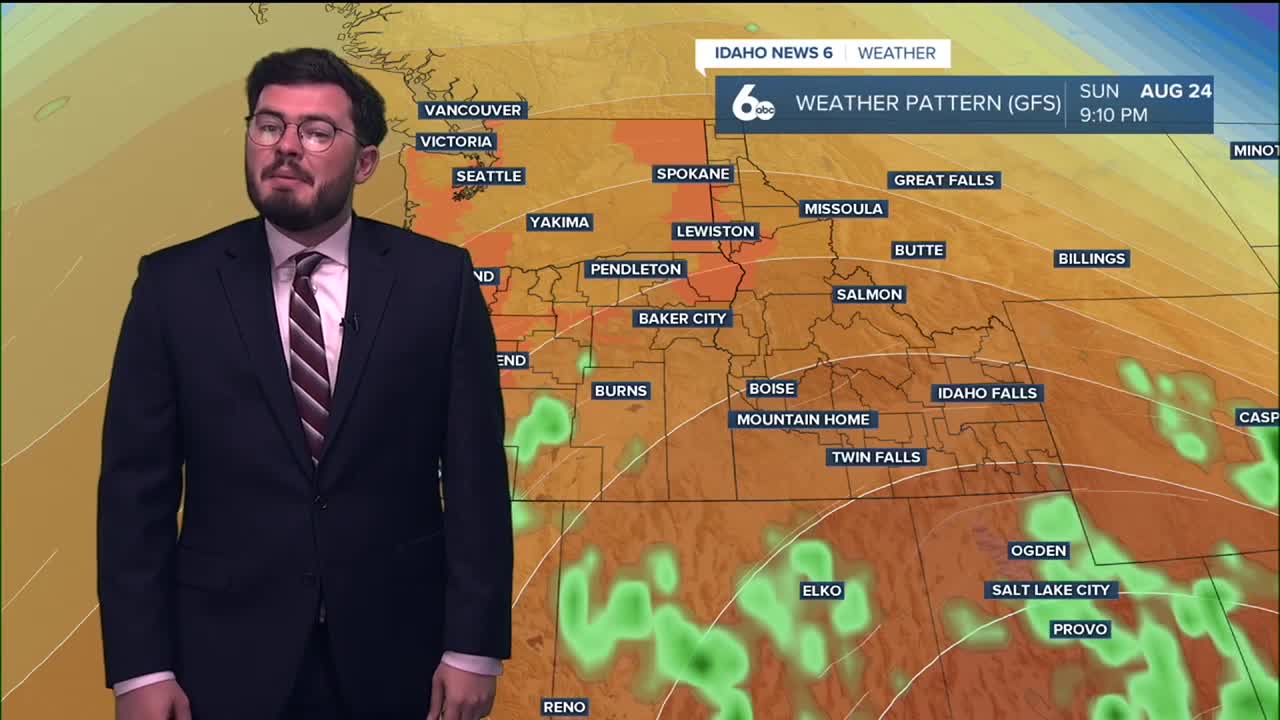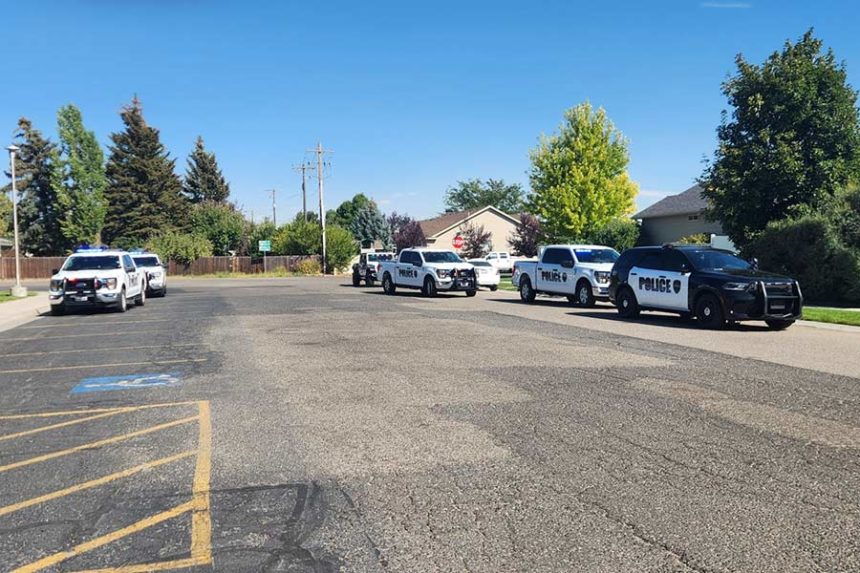Famine declared in Gaza City as Israel escalates fighting

The world’s foremost expert on food crises declared on Friday that hunger is engulfing the largest city in the Gaza Strip and that, in the absence of a truce and an end to limitations on humanitarian aid, it is likely to spread throughout the region.
Famine is occurring in Gaza City, which is home to hundreds of thousands of Palestinians, according to the Integrated Food Security Phase Classification, or IPC. By the end of next month, it may expand south to Deir al-Balah and Khan Younis.
Following months of warnings from relief organizations that Israel’s military offensive and limitations on food and other help entering Gaza were creating significant levels of famine among Palestinian people, especially children, the IPC made its decision.
The offensive in Gaza City may make famine worse.
Israel has been engaged in a bloody conflict with Hamas since the militant group’s invasion on October 7, 2023, and the somber milestone—the first time the IPC has certified a famine in the Middle East—is certain to increase international pressure on Israel. According to experts, Israel intends to intensify the conflict in the near future by capturing Gaza City and other Hamas strongholds, which will worsen the hunger problem.
According to the IPC, after 22 months of conflict, hunger has reached life-threatening proportions throughout the entire territory due to fighting, the embargo of aid, mass displacement, and the collapse of food production in Gaza.
According to the IPC research, over half a million Gazans, or around 25% of the population, suffer from catastrophic levels of hunger, and many are at risk of passing away from reasons associated to malnutrition. The IPC stated last month that the worst-case scenario of starvation was occurring in Gaza, but they did not make a formal decision.
Israel denies the starvation report.
Benjamin Netanyahu, the Israeli prime minister, has disputed that there is hunger in Gaza, accusing Hamas of fabricating tales of famine. Israel announced steps to allow additional humanitarian aid to enter Gaza after pictures of malnourished youngsters and allegations of hunger-related deaths were made public. However, Gazan Palestinians and the U.N. claim that the amount of aid entering is significantly less than what is required.
The report was rejected Friday by the Israeli military agency responsible for humanitarian transfers to the area, which described it as biased and inaccurate. The organization, called COGAT, denied that hunger was occurring in Gaza and stated that major efforts had been made in recent weeks to increase the flow of aid into the region.
Israel’s ministry of foreign affairs also disapproved of the results in a social media post, claiming that the IPC report was founded on false information from Hamas.Since the war began, more than 100,000 trucks of relief have reached Gaza, including a significant surge of staple items in recent weeks, according to the report.
According to Chris Newton, an analyst for the International Crisis Group, Israel made famine a central component of its effort to dominate the strip, which is why a growing number of people—especially young children—are dying avoidable deaths from disease and starvation.
He claimed that Israel’s desire to intensify the battle in Gaza City just weeks after receiving a warning that famine was starting there shows how deliberate the famine is and how Israel controls starvation.
Netanyahu claims that in order to fulfill Israel’s objectives of releasing the hostages that Hamas has held and eradicating the militant organization completely, further military pressure is required.
How to identify a famine
Famine determinations are rarely made formally. Famines in Somalia in 2011, South Sudan in 2017 and 2020, and portions of Sudan’s western Darfur region last year have all been identified by the IPC.
When all three of the following criteria are met, the IPC declares that there is a famine in a region:
At least 20% of homes are effectively hungry due to a severe food shortage. A weight-to-height ratio indicates that at least 30% of children aged 6 months to 5 experience acute malnutrition or wasting, and 15% of that age group have acute malnutrition based on upper arm circumference. Additionally, famine or the combination of malnutrition and illness kills at least two persons every 10,000, or four children under the age of five.
Data collection has been challenging because to Israel’s offensive and its limitations on access to Gaza.
The analysis of the data from July 1 to August 15 demonstrated unequivocal proof that acute malnutrition and famine criteria had been surpassed. Although collecting mortality statistics has proven more difficult, the IPC stated that it is reasonable to infer from the facts that the required threshold has most certainly been attained.
By the end of September, a third of Gaza’s population may experience catastrophic levels of hunger, and the IPC warned that this number is likely underestimated.
According to Alex de Waal, executive director of the World Peace Foundation and author of Mass Starvation: The History and Future of Famine, if Israel had given the IPC greater access to data collection tools, a famine may have been identified months earlier, bringing attention to the issue sooner.
Unfortunately, it appears that specialists must declare famine! He stated that it is too late by the time the world notices.
Throughout the conflict, Israel has imposed various restrictions on aid. To put pressure on Hamas to release captives, it banned the entry of all items in March, including food, medicine, and fuel.
Israel said there is currently no cap on the number of assistance trucks that can enter Gaza after easing the restrictions in May. However, it also advanced a new assistance delivery system supported by the United States that forces Palestinians to cross Israeli military lines and travel great distances in order to receive help.
According to the traditional, U.N.-led assistance providers, Israeli military restrictions and looting incidents have hindered deliveries, and ravenous crowds and criminals have overrun entry convoys.
While Israel claims it has only fired warning bullets and that the number is inflated, witnesses, health officials, and the U.N. rights office believe hundreds of people have been killed by Israeli forces while attempting to receive aid from both providers.
In Gaza City, a dad observes his kids deteriorating
About 700,000 people, or the population of Washington, lived in Gaza City on the eve of the conflict.
It has been the target of frequent Israeli ground operations and shelling throughout the conflict. A number of neighborhoods have been nearly demolished. During a ceasefire earlier this year, many of the hundreds of thousands who had evacuated under Israeli evacuation orders at the beginning of the war returned.
In recent weeks, the number of people in Gaza who are clearly malnourished has increased, according to medical professionals.
According to Kirsty Blacka, an Australian emergency nurse who worked in the Al-Quds hospital in Gaza City until June, famished men who were malnourished and had no underlying medical concerns were arriving looking like teenagers.
Malnourished people have a harder time recovering from illnesses, she added, and the shortage of food has been made worse by tainted water that has caused infections and diarrhea.
According to Blacka, thousands of Palestinians will be too frail to flee if Israel evacuates the city before its upcoming invasion. She claimed that many Palestinians will perish as a result of the malnutrition, which would further tax already exhausted bodies.
Families in Gaza City claim to be witnessing the deterioration of their loved ones.
Yousef Sbeteh’s two adolescent children have been hospitalized for the past two months after being hit by shrapnel during an Israeli airstrike in June. While there, they’ve both lost weight because there hasn’t been enough food, he said, adding that he can’t afford to buy more because prices at markets have soared. The teenagers had no prior problems, according to the doctors.
According to her doctors, his 15-year-old daughter Aya lost around 20 kilograms (44 pounds), or roughly 30% of her body weight. Ahmad, her 17-year-old brother, has shed roughly 15 kg (33 pounds). According to experts, their recuperation is being slowed down by a lack of nutritious meals and nutritional supplements.
Doctors say she needs protein, meat and fish, Sbeteh said while sitting beside his frail daughter. I can’t give that right now, though.











